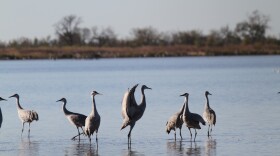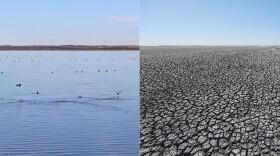Whooping cranes are rare. In 1942, there were only 20. Today there are 500, and some have been spotted at the Quivira National Wildlife Refuge in Stafford County according to The Wichita Eagle. However, if you want to catch a glimpse of the tallest species of North American birds, keep your distance.
Barry Jones, visitor services specialist, issued a caution to Kansas birders to give the birds space — at least a half-mile between humans and whooping cranes, an endangered shorebird.
“Remain on public roads or at or near your vehicle,” Jones wrote in an email addressed to the Kansas birding serve list.
“Under no circumstances should you approach the birds on foot.”
As long as the rare birds remain on the refuge, all hunting will be suspended.
“The protection and safety of these birds are paramount,” Jones wrote. “Often Whooping Cranes arrive at Quivira weary and hungry from travel, so allowing them an undisturbed period on the ground is very important. Persons on foot, excessive noise and movement can have the potential to disturb the cranes.”
The birds come through Kansas as they migrate from their nesting grounds in northern Canada to their wintering spot at Texas’ Aransas National Wildlife Refuge on the Gulf of Mexico, a distance of about 2,500 miles. It typically takes the birds about three weeks to make the journey, according to Whooping Crane Journey North website.
At Quivira, the best areas to look for them are at the south end of the Little Salt Marsh, which offers an observation tower and telescope to scan the marsh, and at the west side of the refuge’s Big Salt Marsh, where another telescope is located.
For the most current updates on the birds and refuge hunting, check ww.fws.gov/quivira or call 620-486-2393.







